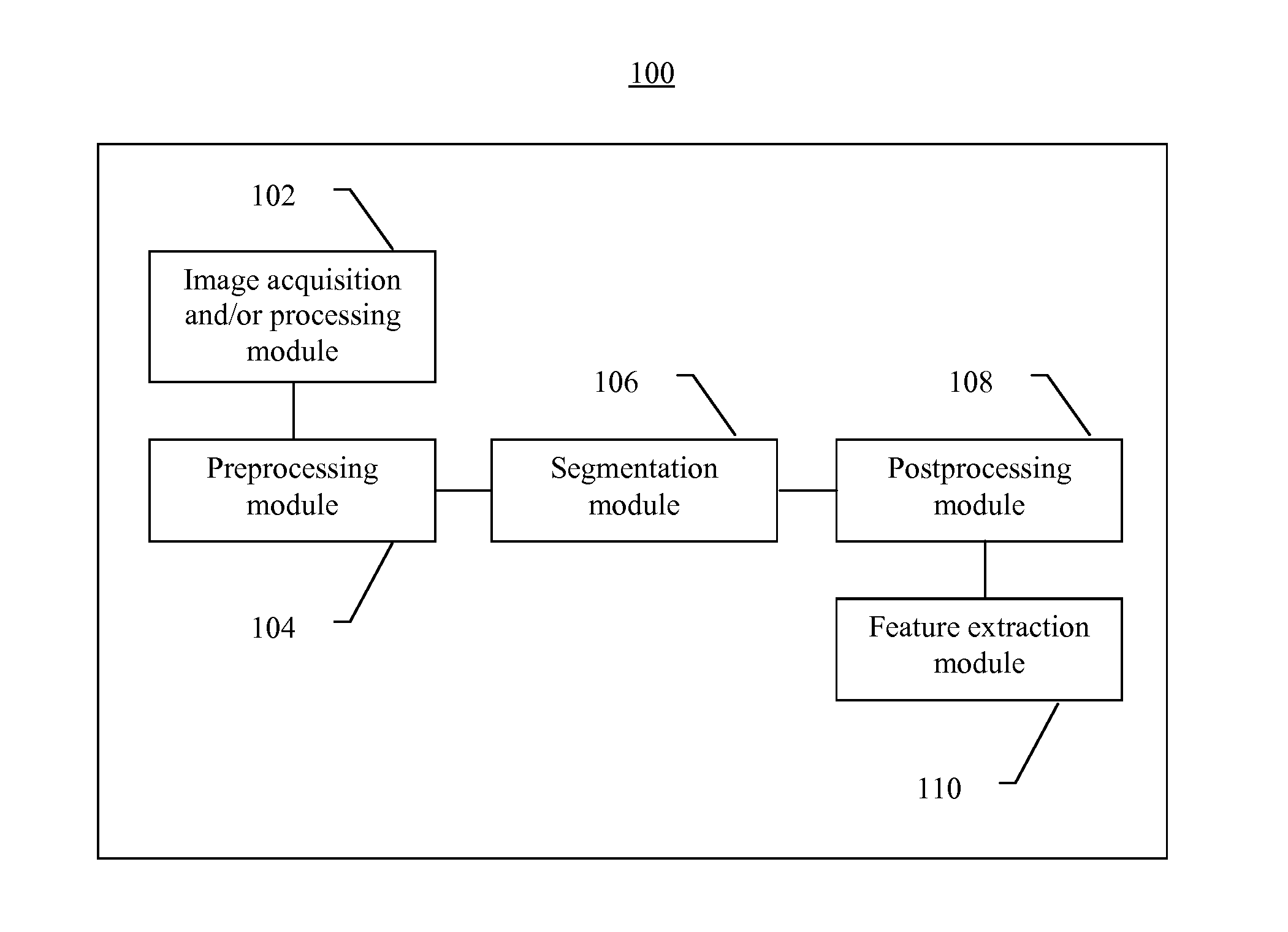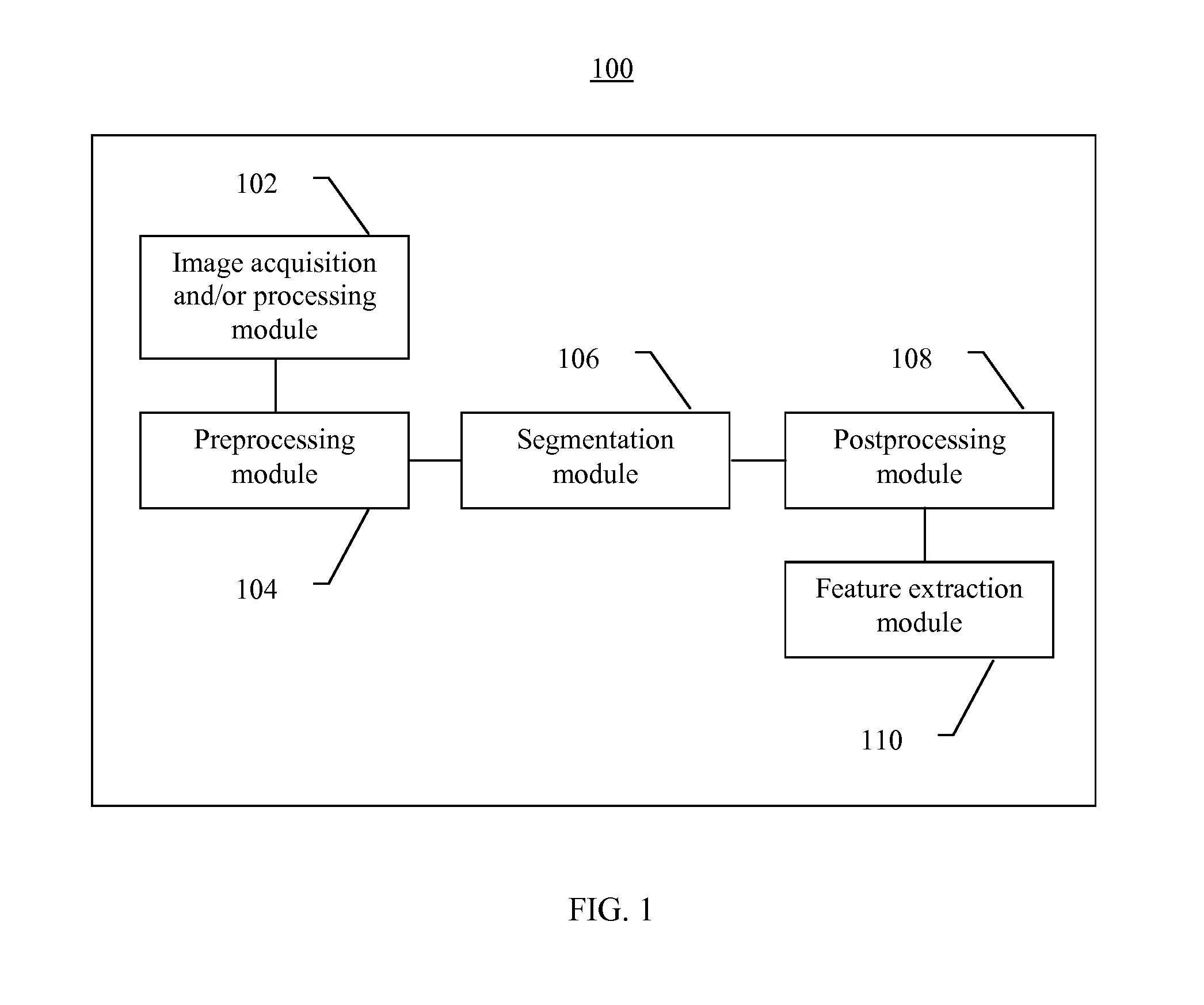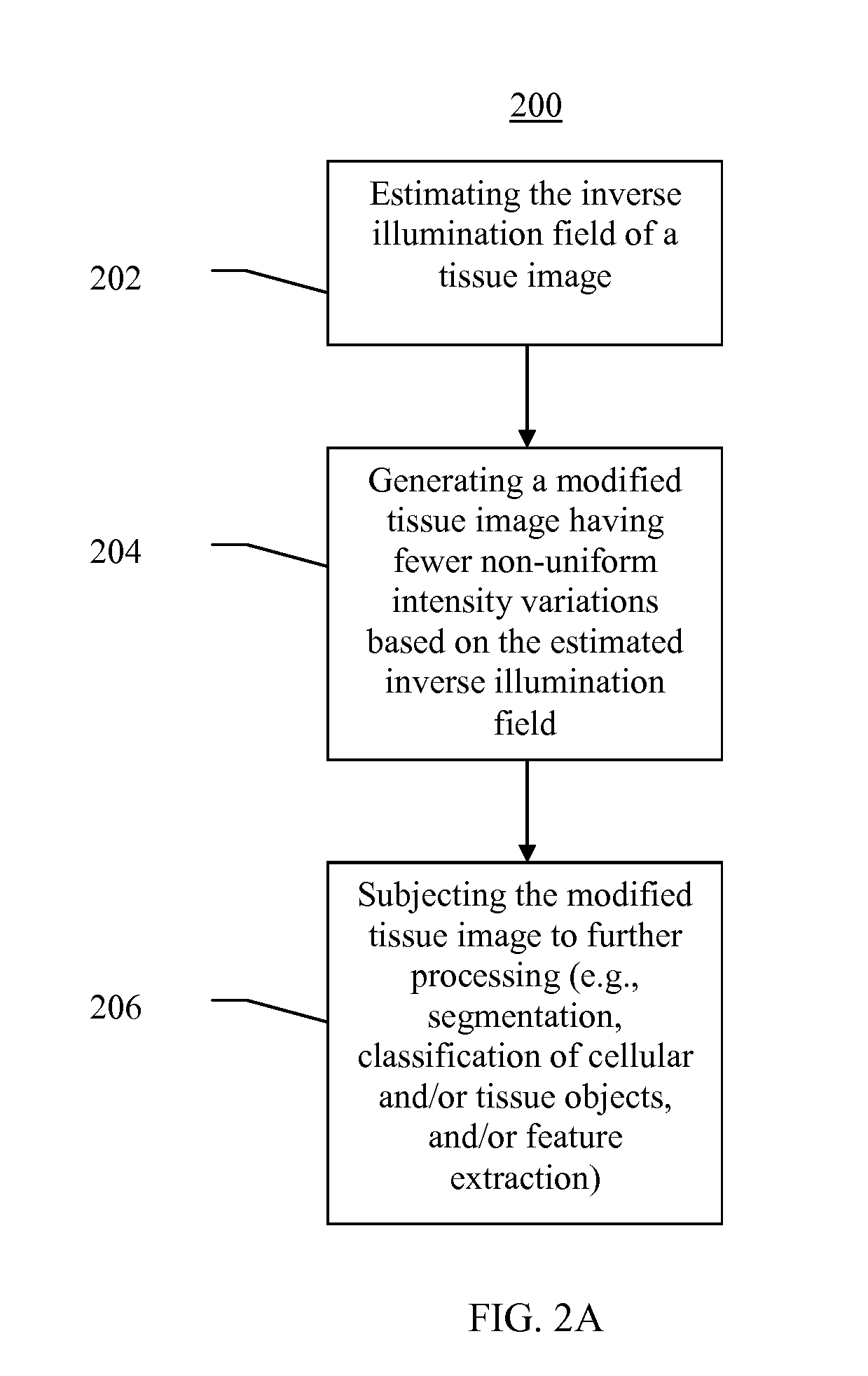Systems and methods for segmentation and processing of tissue images and feature extraction from same for treating, diagnosing, or predicting medical conditions
a tissue image and feature extraction technology, applied in image analysis, image enhancement, instruments, etc., can solve the problems of difficult segmentation of lumens, exacerbated problems, and under-segmentation of clustered nuclei
- Summary
- Abstract
- Description
- Claims
- Application Information
AI Technical Summary
Benefits of technology
Problems solved by technology
Method used
Image
Examples
example 2
[0226]Localizing per image ARRR70. This involves calculating the weighted average of the ARRR70 per ring feature over the entire image, and the weighted average of the Gleason triangle components per ring over the entire image. The weighting method here uses nuclei area as a weight and normalizes over region types 1 and 2. The weighted average of ARRR70 and each of the three morphology components are multiplied to obtain three values. A least-squares fit of the result to 0 (non-event) or 1 (event) to creates a probability score which is the output feature value.
example 3
[0227]Naïve Bayes per ring ARRR70. This involves multiplying the ring values of ARRR70, by each of the three morphology components (s3, s4f, and s4s). A weighted average of the resultant AR components is then taken over the image, as in Example 1. The three components are separately converted into three probability scores (p3, p4f, p4s) which are then combined assuming the non-event probabilities are independent using the formula:
Probability score=1−(1−p3)(1−p4f)(1−p4s)
example 4
[0228]Naïve Bayes per image ARRR70. This involves calculating the weighted average of the ARRR70 per ring feature over the entire image, and the weighted average of the Gleason triangle components per ring over the entire image as in Example 2. The weighted average of ARRR70 and each of the three Gleason components are multiplied to obtain three values which are separately converted into three probability scores (p3, p4f, p4s). The three probability scores are then combined assuming the non-event probabilities are independent as in Example 3.
PUM
 Login to View More
Login to View More Abstract
Description
Claims
Application Information
 Login to View More
Login to View More - R&D
- Intellectual Property
- Life Sciences
- Materials
- Tech Scout
- Unparalleled Data Quality
- Higher Quality Content
- 60% Fewer Hallucinations
Browse by: Latest US Patents, China's latest patents, Technical Efficacy Thesaurus, Application Domain, Technology Topic, Popular Technical Reports.
© 2025 PatSnap. All rights reserved.Legal|Privacy policy|Modern Slavery Act Transparency Statement|Sitemap|About US| Contact US: help@patsnap.com



